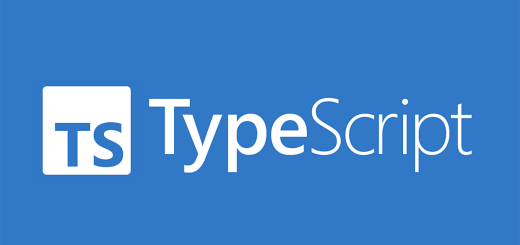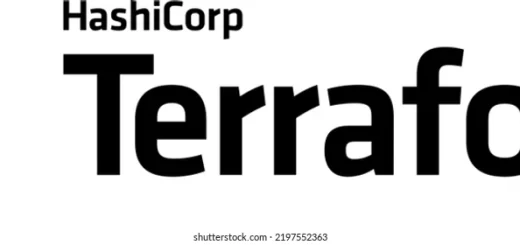RAID 0, 1, 5, 6, 10, 50 Advanced
As the cloud expands, one thing is clear: storage systems are fundamental for its future success. With a growing hunger for ultra-reliable, high-performance, and expansive storage solutions, the data center will continue to be dominated by advanced storage systems.
RAID Mechanical / SSD
Traditional mechanical hard disk drives (HDDs) still hold a place in the data center for their cost-effectiveness in high-capacity storage. However, flash-based storage, including SSDs and NVMe drives, has taken center stage for its superior performance. RAID (Redundant Array of Independent Disks) continues to be a critical technology, evolving to leverage the capabilities of these newer storage mediums.
For the advanced user, RAID provides two primary benefits:
- Increased Performance: RAID configurations can significantly improve input/output operations per second (IOPS) by striping data across multiple drives.
- Data Protection: RAID offers redundancy by distributing data across multiple disks, allowing for data recovery in case of a drive failure.
Choosing the right RAID level depends on your specific needs:
- Prioritize Performance: RAID 0 (striping) offers the highest performance but no redundancy.
- Maximize Data Protection: RAID 6 (dual parity) provides the highest level of data protection, tolerating two simultaneous drive failures.
- Balance Performance and Protection: RAID 1 (mirroring), RAID 5 (single parity), and RAID 10 (mirroring and striping) offer a balance of performance and data protection.
Important Note: RAID is not a backup solution. It protects against drive failures but not against data corruption, accidental deletion, or other data loss scenarios. A comprehensive backup strategy is essential.

Different Types of RAID
RAID 0 (Striping)
- How it works: Data is split (“striped”) across multiple disks. Imagine a single file being divided into blocks, and each block is written to a different disk.
- Performance: Offers the highest read and write speeds because multiple disks are accessed simultaneously.
- Data protection: Provides NO redundancy. If one disk fails, ALL data is lost.
- Use cases: Situations where speed is paramount and data loss is less critical (e.g., temporary files, video editing scratch disks).
RAID 1 (Mirroring)
- How it works: Data is mirrored onto two or more disks. Each disk has an identical copy of the data.
- Performance: Read performance can be improved as the system can read from multiple disks. Write performance is similar to a single disk.
- Data protection: Offers excellent redundancy. If one disk fails, the data is still available on the other disk(s).
- Use cases: Situations where high availability and data protection are crucial (e.g., operating system drives, critical databases).
RAID 5 (Striping with Parity)
- How it works: Data is striped across multiple disks, and parity information (used for data reconstruction) is distributed across all disks.
- Performance: Good read performance, but write performance is slightly lower due to parity calculations.
- Data protection: Tolerates a single disk failure. If one disk fails, the data can be reconstructed using the parity information.
- Use cases: A good balance of performance and data protection for general-purpose servers and applications.
RAID 6 (Striping with Double Parity)
- How it works: Similar to RAID 5, but with two sets of parity information distributed across the disks.
- Performance: Similar read performance to RAID 5, but write performance is slightly lower due to the additional parity calculations.
- Data protection: Tolerates up to two simultaneous disk failures.
- Use cases: Situations where higher data protection is required (e.g., large storage arrays, critical applications).
RAID 10 (Striping and Mirroring)
- How it works: Combines RAID 1 and RAID 0. Data is mirrored (RAID 1) and then striped (RAID 0) across multiple sets of mirrored disks.
- Performance: Excellent read and write performance due to both mirroring and striping.
- Data protection: Can tolerate multiple disk failures, as long as both disks in a mirrored pair don’t fail simultaneously.
- Use cases: High-performance applications that also require high availability (e.g., databases, web servers).
RAID 50 (Striping and Parity)
- How it works: Combines RAID 5 and RAID 0. Data is striped with parity (RAID 5) across multiple sets of disks, and then those sets are striped (RAID 0).
- Performance: Good read and write performance, with improved data protection compared to RAID 0.
- Data protection: Can tolerate multiple disk failures, as long as no more than one disk fails in each RAID 5 set.
- Use cases: Large storage arrays where a balance of performance, capacity, and data protection is needed.
RAID and the SSD Era
SSDs and NVMe drives offer incredible speed, but they are not immune to failure. RAID remains crucial for data protection even with these advanced drives.
- Reduced Write Penalty: Concerns about write amplification with parity RAID (RAID 5, 6) are less significant with SSDs due to wear-leveling technology.
- Optimal Configurations: RAID 5, RAID 6, and nested RAID levels like RAID 50 and 60 work effectively with SSDs, providing a good balance of performance and protection.
Is It Best Practice To Stop Using A RAID Array If A Drive Fails?
RAID arrays are commonly used to store data on servers, but are they really the best option for your business? While they may seem like a reliable solution, there are a few issues that you should be aware of.
- RAIDs can be impacted by environmental factors such as power loss, inadequate cooling, or increased humidity. These events can harm the integrity of the array and ultimately lead to data loss.
- If you are using RAID 1,5,6, or greater, your data will be safe if you take precautions. However, if a drive fails in a RAID 1 setup, it is recommended that you stop using the server and any attached disks.
RAID 1 mirrors the data between at least 2 disks, giving you 1:1 copies of the data. If a disk fails, the RAID will go into a failed state until the disk is replaced. You will effectively be working on a single disk with zero redundancy. If the working disk(s) fail, all of the data will be lost, so swapping out the failed disk should be a top priority.
So, what’s the solution? Consider using a backup system that creates a copy of your data outside of the RAID array. This will ensure that your data is safe even if your RAID system fails. Plus, you won’t have to worry about any environmental factors that could impact your data.
Remember, your data is the lifeblood of your business. Don’t take any chances with it. Take the time to evaluate your storage options and choose the solution that will keep your data safe and secure.
Protect your data and your business!
Unlocking The Performance Benefits of RAID
RAID is like the Swiss Army knife of storage solutions, it offers both performance and data protection benefits. However, not all RAID configurations are created equal, and it’s important to understand how each RAID level affects performance. Imagine you’re a photographer who captures breathtaking landscapes. You have thousands of high-resolution images that need to be stored safely and accessed quickly. RAID 0 would give you lightning-fast performance, but it’s like walking a tightrope without a safety net. If one disk fails, all your data is lost forever.
On the other hand, RAID 5 and RAID 6 provide excellent data protection, but performance can be impacted due to write bottlenecks. It’s like driving a tank, it’s slow and steady, but it gets the job done. So, what about nested RAID levels like RAID 10, 50, and 60? It’s like having a team of backup dancers who mirror your every move. The reading performance is fantastic, but writing can be slower due to the duplication of data. The more disks you add, the better the performance, but keep in mind that these configurations require many disks and can use up to 80% of the available disk capacity.
Now that we have SSDs and NVMEs, do RAID types still matter? Absolutely! SSDs and NVMEs are lightning-fast, but they are not immune to failure. RAID remains an essential component for data protection, even when using SSD/NVME. RAID 5, 6, and nested RAID levels like RAID 50 and 60 work well with solid-state disks.
Beyond Traditional RAID
Modern storage systems are moving beyond traditional RAID levels, embracing technologies like:
- RAID-Z: Found in ZFS, RAID-Z offers improved data protection and efficiency compared to traditional RAID 5 and 6.
- Erasure Coding: This technique provides higher levels of data protection and storage efficiency, particularly beneficial for large-scale storage systems.
Hardware vs Software RAID: Which One Should You Choose?
The type of RAID controller can have a significant impact on performance. Software controllers are cheaper, but they can drastically impact performance. Hardware controllers, on the other hand, plug directly into the system board and process all RAID I/O requests. They are much faster, eliminate I/O bottlenecks, and enable advanced features such as multi-pathing and failover channels for redundancy. Think of it like a chef using a blender to make a smoothie. A high-quality blender will do the job quickly and efficiently, while a cheap blender will struggle and take forever to blend the ingredients together.
Monitoring Your RAID Array
Continuous monitoring is crucial for maintaining RAID health and preventing data loss. Modern storage controllers offer features like:
- Email Alerts: Configure email notifications for disk failures, performance degradation, and other critical events.
- Vendor Alerts: “Dial-home” features enable automatic alerts to the hardware vendor in case of failures or potential issues.
- Comprehensive Monitoring: Monitor disk health, controller status, performance, RAID card health, battery backup unit health, and error logs to ensure optimal operation.
Protecting Your Data: A Holistic Approach
RAID is just one piece of the data protection puzzle. A complete strategy should include:
- Regular Backups: Implement a robust backup system that creates copies of your data outside of the RAID array.
- Off-site Backups: Store backups in a geographically separate location to protect against disasters.
- 3-2-1 Rule: Maintain at least three copies of your data, on two different media types, with one copy off-site.
By understanding the nuances of RAID technology in the context of modern storage hardware, and by implementing a comprehensive data protection strategy, you can ensure the safety and availability of your critical data.




Recent Comments